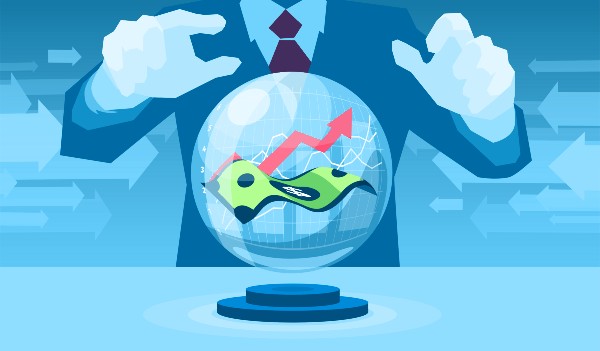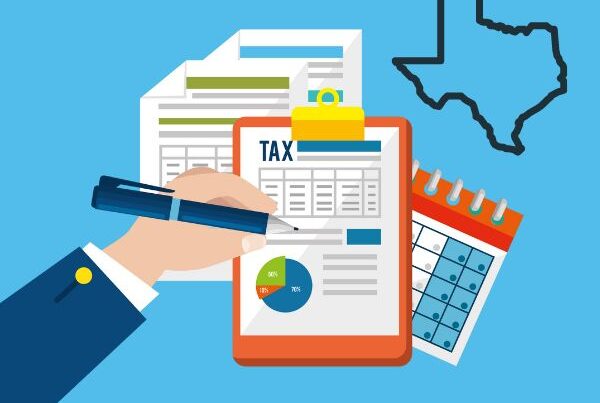You’ve made it through 2020 and now 2021. Planning for the next year has never been so challenging. With a new year looming, let’s explore 5 financial predictions for ecommerce in 2022. Much of these predictions will impact any business, but the take is specific to those doing ecommerce. Here they are:
- Inflation continues
- Interest rates rise
- Supply chain challenges persist
- Ecommerce acquisitions stay hot
- Traditional digital marketing is less effective
Inflation Continues
From a financial perspective, it’s all about inflation. COVID may have created the conditions, but inflation derives all aspects of this prediction list. Inflation was supposed to be temporary or transitory using the language of the Federal Reserve, but it’s holding on and growing. In November 2021, the Consumer Price Index was at 6.8%, marking the strongest inflation since 1982!
The cause of inflation is often attributed to supply chain issues, but price increases are everywhere: housing, cost of labor, energy, and more. What isn’t discussed as much is the massive increase in the money supply in the form of business programs (think Paycheck Protection Program), individual programs (think extended unemployment), and the fancy concept of quantitative easing where the Federal Reserve has purchased massive amounts of bonds and securities to the tune of $4 Trillion dollars. The way they do this is through increasing the money supply. The reason is to keep the economy liquid and moving and how it has moved.
This has resulted in a lot of benefits for businesses selling goods where people have money and are willing to spend. The challenge is that winding down this stimulus is delicate and without some care and luck, it may end in an ugly recession.
For now, I’m saying to plan on continued inflation in 2022, meaning higher costs of inventory, shipping, labor, and everything else. Let’s hope it levels off, but inflation can be hard to slow down once wound up.
Interest Rates Rise
To combat inflation, the Federal Reserve is winding down quantitative easing and has stated there will be three interest rate increases in 2022. How high rates will go will likely depend on the size of inflation. In 1981, to combat inflation, the Federal Reserve raised the Federal Funds Rate to 19% which arrested inflation growth, but also resulted in a recession. The line that the Federal Reserve is walking is narrow in that they need to combat inflation while ensuring the economy persists. In recent decades, increases have been minor, but don’t hold your breath on where it will go.
Regardless of how high rates are by the end of 2022, here are some things every business doing ecommerce should consider:
- Loans and lines of credit will be more expensive
- Refinance loans now to take advantage of historic lows
- Lock in rates for all debt if possible
- If you are thinking of doing any sort of financing, do it now!
Now is a great time to have good debt. A year from now won’t be as favorable.
Supply Chain Challenges Persist
The party continues until it doesn’t. As long as there is lots of cash, there will be lots of demand. Add to that the ongoing impact of COVID with new variants on the ability to do in person work like manufacturing and shipping. The backlog in factories and ports may take time to unwind without an abrupt negative downturn. I predict it will get better, but nothing like pre-COVID.
As such, businesses doing ecommerce are going to be smarter about inventory:
- Ordering further in advance to account for longer cycles
- Carrying more inventory to accommodate supply chain delays
- Consider the impact of increased costs
- Being smart and quick about price increases (see Pricing Strategies During Inflation for some ideas.)
Ecommerce Acquisitions Stay Hot
There has been a lot of acquisitions of businesses doing ecommerce. Purchasing of cash flowing businesses is hot with lots of cash in the economy and few options for returns. There are many aggregators that are buying up direct to consumer brands, Amazon businesses, and so on. If you have profits, you’re in demand. Add to that equal interest from private equity firms who are looking for returns on funds raised. Finally, there are also strategic buyers (AKA other brands) who are looking to expand their offerings.
The other factor driving acquisition of ecommerce businesses is the increased amount of ecommerce. eCommerce as a percentage of total sales had a huge spike in early 2020 with COVID lockdowns and has gradually declined since, but still is higher pre-COVID sitting at 13.0 % in Q3 2021. While there has been a slight decline in the referenced graph, you can see the long-term trend and can expect that to continue to increase.
As such, 2022 will likely continue to be a good time to sell your ecommerce business.
Traditional Digital Marketing ROAS Doesn’t Improve
OK, I’m going out on a limb, but not too far. The big marketing story in 2021 was the Apple’s changes to iOS 14.5 impacting Facebook and lowering ad effectivity. Anyone advertising on Facebook is painfully aware of this. This has hurt a ton of consumer brands who were reliant on Facebook ads for customer acquisition. There is a good chance Facebook fixes this in 2022, but it’s a hard problem to solve so don’t bet on it.
If an ecommerce business hasn’t adjusted yet, now is the time. If you run your digital marketing playbook from 2020, you will continue to pay more. The good thing is there are a lot of ways to reach customers with new digital channels, podcasts, streaming, mailers, email, and so on. As with all things digital marketing, keep on evolving.
Conclusion
These are just predictions. Consider them as such and use your own analysis to determine what’s best for your business. Much of what I’ve outlined here isn’t great, so I hope I’m wrong. Check back in a year and we’ll find out. Remember, you’ve made it through 2020 and 2021 so you’re stronger than you were before. Good luck in 2022!





